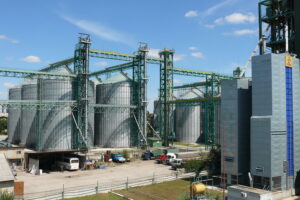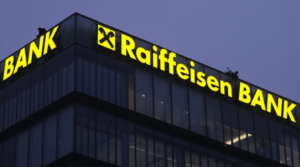
Agro-Region has reduced the cost of grain and oilseeds transportation by up to 30% by creating its own fleet of 40 grain carriers, the company’s press service reported on its Facebook page.
“As of today, 58 thousand tons of grains and oilseeds have been exported, with the balance for export of more than 60 thousand tons, including 30 thousand tons of corn and wheat,” said Oleksandr Tymoshenko, commercial director of the agricultural holding, adding that sunflower and rapeseed were the most profitable in the 2024 season due to higher prices than a year earlier.
Agro-Region pointed out that the main volumes of agricultural products are transported by rail and road to ports, and then the grain is exported by sea. Several factors contributed to the reduction in transportation costs, including the company’s own grain carrier fleet, which guarantees flexibility in planning and a fixed cost of transportation.
“Agro-Region received 25 hopper cars as part of the USAID Economic Support for Ukraine grant program. After that, it raised additional funds and invested them in an additional 15 railcars.
Agro-Region owns a land bank of 39 thousand hectares in Kyiv, Chernihiv, Zhytomyr, and Khmelnytskyi regions. It specializes in crop production. It consists of 11 companies organized into four crop production clusters. It has two elevators – Boryspil elevator with a capacity of 73 thousand tons and Miropil elevator with a capacity of 52 thousand tons.
Agro-Region’s annual harvest of grains and oilseeds is up to 200 thousand tons.
In April 2021, the Swedish company Lobiu Sala AB, owned by the former Minister of Economy of Ukraine Aivaras Abromavičius, received permission from the Antimonopoly Committee of Ukraine to buy the Swedish Agro Region Stockholm Holding, which manages the Agro-Region group of companies in Ukraine.

Agrane Agro Holding has modernized the grain receiving infrastructure at the Service Grain elevator complex (Odesa region) and laid a 200-meter railway line to it, the group’s press service reports.
According to the report, the newly laid railway line allows the company to ship up to 30 cars per day, which reduces the cost and speeds up the delivery of grain to ports.
In addition, Service Grain has equipped three hubs for receiving grain from trucks, including heavy trucks (up to 20 m long). With a total capacity of 2,000 tons, the elevator complex is ready to receive grain up to 1,700 tons per day.
According to the agroholding, the storage capacity of the complex, which is equipped with equipment from the domestic manufacturer KMZ Industries, has already reached 100 thousand tons.
“Thanks to the introduction of modern technologies, the elevator can simultaneously accept and ship both large and small batches of grain in a short time,” Agrane summarized.
“Agrain is engaged in the cultivation and storage of grains and oilseeds, as well as livestock farming. Before the full-scale Russian invasion, the agricultural holding included 11 agricultural enterprises. It cultivated about 110,000 hectares in Zhytomyr, Kharkiv, Chernihiv, Odesa, and Cherkasy regions.
The holding is owned by SAS Investcompagnie (France).

Ukraine’s economy in 2025 will grow by 4.9% with a slight decrease in inflation rate compared to this year to 8%, such macro forecast of Raiffeisen Bank (Kiev) was shared by the head of its board of directors Alexander Pisaruk.
“As for the dollar exchange rate, we expect devaluation of about 8% in 2025, and the exchange rate itself will be 45.5 UAH/$1 at the end of 2025. The baseline scenario is based on the hypothesis that security risks will improve from the second half of 2025,” he said in an interview with Interfax-Ukraine.
Pisaruk noted that the bank always does stress tests taking into account not only the baseline scenario, but also the best and worst case scenarios.
“But we do not have two fundamentally different development scenarios. All preliminary forecasts on the end of the war did not come true. The head of the NBU said this at the meeting of the European Business Association, and I am ready to sign these words that let’s stop predicting and making mistakes, and let’s just work,” – said at the same time the head of Raiffeisen.
According to him, even if the ceasefire is at the end of the first quarter, it will not dramatically affect performance in 2025.
“It could have an impact on 2026. So even such important things affect with a certain lag. 2025 will be influenced by the current dynamics of inflation growth and the need to curb it,” Pisaruk said.
He added that he would not be surprised if the National Bank has to raise the discount rate as a result of faster-than-expected acceleration of inflation.
“Regarding deposit and lending rates in hryvnia, we do not expect them to deviate significantly from current levels,” the banker pointed out.
He reminded that this process began back in July, and the main factor is the dynamics of the NBU discount rate, which is very likely to be stable until mid-summer 2025.
“But the rates on deposits in US dollars and euros may slightly decrease in response to the relevant decisions of the Fed and the ECB, although they remain quite low in Ukraine now,” – suggested the head of Raiffeisen Bank.
Commenting on the impact of the situation on the front on the mood of the population and business, he stated that this is reflected in the foreign exchange market.
“We observe a significant increase in demand for cash currency, although the supply also remains high. This leads to an increase in interventions by the National Bank, which, fortunately, has reserves for this purpose, formed at the expense of international currency aid,” Pisaruk said.
According to him, the situation now seems quite manageable, as the external aid next year looks sufficient to finance the budget deficit and replenish the NBU’s foreign exchange reserves. The CEO also said that Raiffeisen Bank remains the main supplier of cash currency to Ukraine.
“And who is number two, I don’t even know, because the gap is huge. This is a complicated business – you need to know the counterparties, provide logistics. We know how to do it and have been doing it for decades”, – he noted.
As reported, the GDP of Ukraine, according to the State Statistics Committee, in 2023 grew by 5.3% after a decline of 28.8% in 2022. The National Bank of Ukraine in late October raised the forecast of economic growth for 2024 from 3.7% to 4%, and for 2025 – from 4.1% to 4.3%. At the same time, the NBU in late October worsened the inflation forecast for 2024 from 8.5% to 9.7% and worsened it for 2025 from 6.6% to 6.9% after it fell to 5.1% in 2023 after jumping to 26.6% in 2022. The National Bank of Ukraine (NBU) on November 27 lowered the official hryvnia exchange rate to 41.6010 UAH/$1, the lowest value in its history. In general, since the beginning of 2024, the dollar at the official rate has appreciated by 9.5%, or by UAH 3.59, and since the transition of the National Bank on October 3, 2023 to the regime of managed flexibility – by 13.8%, or by UAH 5.03.
Quotes of interbank currency market of Ukraine (UAH for 1 PLN, in 01.07.2024-30.07.2024)

Open4Business.com.ua

Ukraine’s state budget has received $235 million in concessional financing from the Government of Japan under the World Bank’s new systemic projects, the Resilient, Inclusive and Environmentally Balanced Enterprise (RISE) and the Increasing Access to and Resilience of Education in Crisis-affected Ukraine (LEARN).
As the Ministry of Finance reported in a press release on Wednesday, the RISE program received a $130 million loan that will be used to address critical issues that hinder the growth and sustainable development of the private sector.
The Ministry clarified that the $105 million in Japanese funds received under the LEARN project is the result of the Ukrainian government’s implementation of measures to ensure safe face-to-face learning in schools by providing subventions for shelters and school buses in 2024.
The projects are implemented using the Program-for-results (PforR) financial instrument, when funds are allocated after Ukraine has achieved some of the results.
The Ministry of Finance noted that by the end of 2024, Ukraine expects to raise another $120 million and $95 million under RISE and LEARN, respectively.

The development company Alterra Group, which is currently implementing the Formatsiya.Lviv industrial park project, intends to build a network of seven such parks, said Olena Podolska, head of the company’s international business unit.
“Lviv will be our first park, then we will go to Rivne, two will be in Kyiv, and then we will return to the western region – Ivano-Frankivsk, Vinnytsia, and Khmelnytsky,” she said during the Ukrainian Automotive and Mobility Forum 2024 in Lviv, organized by the Ukrainian Automotive and Mobility Cluster with the support of the USAID Competitive Economy of Ukraine Program.
Podolska noted that there are already several local manufacturers who plan to open 10,000 square meters of production facilities in the Formation.Lviv IP, including the USP sandwich panel manufacturer.
In addition, during the forum, the CEO and owner of Lois Motors LLC, which is implementing a project to create a light electric vehicle LUAZ and plans to scale it up, announced his interest in locating his production in the park.
“I plan to scale up the project and cooperate with the Formatsiya.Lviv industrial park to open either a car production facility for people with disabilities or the next stage of our production,” he said during the forum.
Alterra Group is building 150 square meters of production, warehouse and office space on 30 hectares of land in Formatsiya.Lviv (formerly Formatsiya.Syhnivka). It will include a prototyping laboratory, R&D center, business incubator, event space, offices, and showrooms.
According to the project presentation, the first phase of the park is scheduled to be commissioned in the first quarter of 2025.
Alterra Group LLC is a Ukrainian company specializing in the development and management of turnkey commercial real estate.
The company manages 35 facilities with a total area of 175 thousand square meters. These include warehouse and production complexes, business centers, shopping and entertainment centers.
The company’s completed commercial real estate projects in Ukraine include the PORT logistics center, PROSTIR business hub (both in Lviv), Palo Alto business center (Kyiv), and Joule and JAM warehouse complexes in Kyiv region.